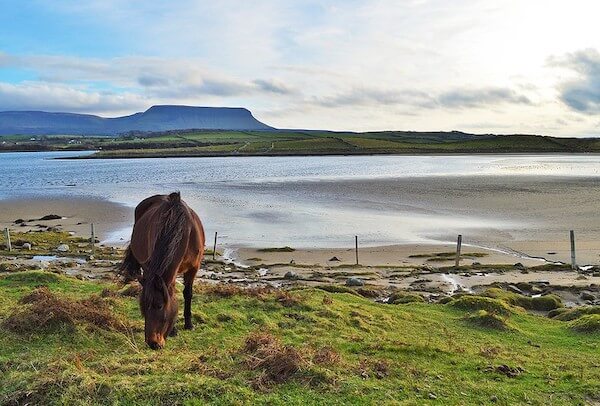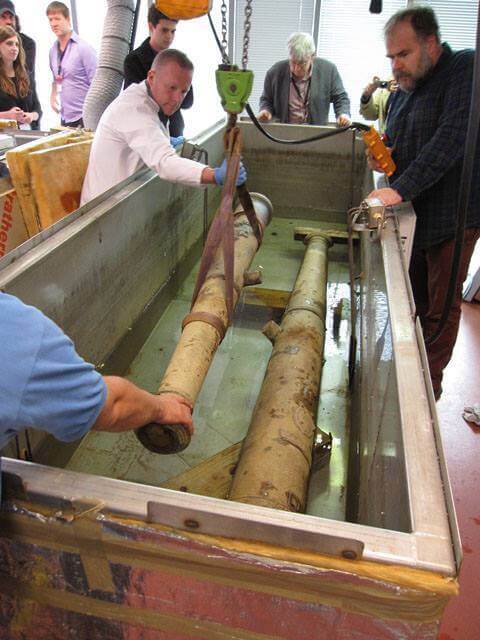Updated October 2021: If you haven’t visited County Sligo’s Streedagh Beach on your travels along Ireland’s Wild Atlantic Way, perhaps it’s time to check out this beautiful hidden spot next time you’re in the county.
This news item and page contain affiliate links and I may earn compensation when you click on the links at no additional cost to you.

The beach is one of several locations used during the filming of the 12-part BBC series, “Normal People,” which was aired worldwide last year on Hulu.
Based on Sally Rooney’s second novel of the same name, the series follows the lives of two young students who come from a fictional town in County Sligo.
The story is about how they navigate their complex relationship, given that they are from different social classes.
By clicking on the Amazon link below, I may earn a small commission from the Amazon Associates Program, but only if you decide to buy something on the site. However, you will not incur any additional costs by doing so.
Rooney, who is from Castlebar, Co. Mayo, has received much acclaim for this novel and the one that came before it, Conversations with Friends.
That novel is also set to become a Hulu feature.
The 29-year-old has been nominated for several literary prizes and won “Irish Novel of the Year” in 2018 and the Costa Book Award in January 2019.
A little under 64,000 copies of Normal People were sold in the United States within four months of its release in 2018.
Her latest novel is called Beautiful World, Where Are You: A Novel.
The first glimpse of the beach is in episode 2 of the series.
Besides being one of County Sligo’s beautiful beaches (Enniscrone shares this title with its equally long strand), there’s an interesting historical twist to Streedagh Beach, which is located in the northern part of the county.
Streedagh Beach and the Spanish Armada
In 1588, three large merchant ships from the Spanish Armada named La Lavia, La Juliana, and the Santa Maria de Visón were wrecked and ended up ashore due to a ferocious Atlantic storm.
The three ships had set sail from Lisbon (part of Spain at the time) on May 29, 1588, in an attempt to invade England and wipe out its navy fleet.

Researchers believe that a southwesterly gale drove them toward the County Sligo coast and on Sept. 21, the cables broke causing the ships to disintegrate, with part of their wreckage ending up on the beach.
Of the 1,100 men on board the three ships, approximately 300 of them ended up on Streedagh Beach.
Many of them were killed soon after by the British and Irish natives loyal to the Crown.
Those who were lucky enough to survive were helped by local Gaelic Chieftains O’Rourke of Breifne and McClancy of Rosclogher, as well as Redmond O’Gallagher, Bishop of Derry.
Check Out the Top Sligo Outdoor Activities

A docudrama of the event and the sailor's subsequent travels in the region as they sought safety was created in 2020.
Where the Wreckage Landed
There are three sites located along the western end of the bay and spread across an area of about 900 meters (about 984 yards) that consist of wreckage from the ships.
The first site on County Sligo's Streedagh Beach is located a little bit away from the center of the beach.

Three guns from the La Juliana were found there, as well as five spoked wheels.
Three bronze guns were also discovered at this wreckage site in 1985, the largest collection of bronze weaponry found from any of the Armada wreck sites in Europe.
In addition to the wreckage that washed up on Streedagh Beach, additional debris from the ship was found in an underwater dive expedition.

They included nine guns bearing the date 1570, as well as a gun carriage wheel and cauldron.
The condition of the La Juliana wreckage was, by far, the most intact.
Other exquisite details on the objects found included crests, the carvings of saints, weight marks within scroll motifs, founder marks, and ornate renderings, all of which could be clearly seen on the rescued items.

Many of the saint carvings included martyred saints from Roman history through medieval times, such as St. John the Evangelist, St. John the Baptist, St. Ilaria, and St. Sebastian.
The second site on Streedagh Beach is believed to be the wreck of the Santa Maria de Visón and the third site to the southwest of site 2 is identified as the site of the Lavia wreck.

In 1987, two wooden gun carriages with bronze guns were recovered, in addition to other items.
All of the artifacts mentioned above can be seen at the National Museum of Ireland in Dublin, one of several free museums in the city.
A festival commemorating the tragic event takes place in nearby Grange every year.
In 2016, Spanish sailors returned to Streedagh Beach to honor their countrymen who had died there several centuries before.
Be sure to take the coastal walk, as suggested by Sligo Walks, that will bring you along the narrow strip of coastline where you’ll discover the remains of the Spanish Armada shipwrecks.
In addition, you might be interested in checking out the De Cuellar Trail, a 3.5 km (2 miles) walk that includes a number of sites connected to the tragedy, including Streedagh Beach, the Armada Interpretive & Visitor Centre, the Armada Monument, Staad Abbey and much more.

